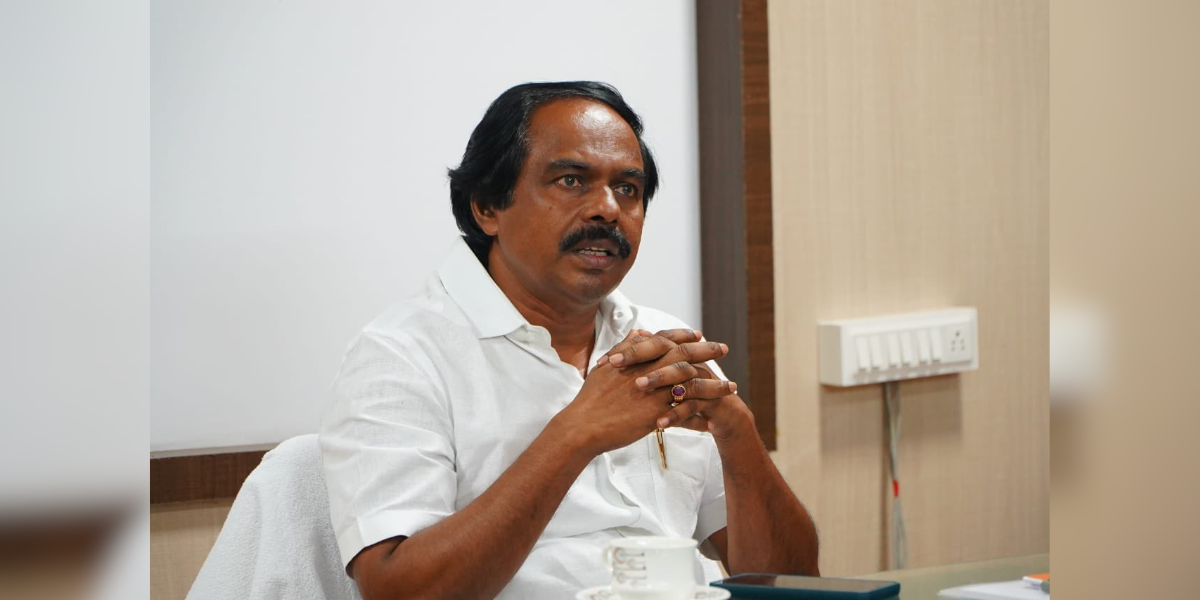He stated that the critical delay in the forecasting system underscored the need for more immediate and accurate weather alerts.

Mano Thangaraj. (X)
In the wake of the devastating rains and subsequent floods that have gripped Tamil Nadu, state’s minister for Milk and dairy Development, Mano Thangaraj, has raised questions on performance of the India Meteorological Department (IMD). The minister said it was time to also reflect on collective response to natural disasters.
While the Tamil Nadu government’s efforts are acknowledged, there is a growing call for improvement, particularly in the precision and timeliness of weather forecasts from the IMD. In his letter to Union government, Tamil Nadu Chief Minister MK Stalin too pointed to inaccuracies in predictions by IMD on quantum of rains.
Taking to X on the issue, Minister for Milk and Dairy Development in Tamil Nadu, Mano Thangaraj, stated, “…it is crucial to reflect on both the performance of our Meteorological Department and our collective response to such natural disasters.”
He added, “While the Tamil Nadu government has exerted considerable effort to manage this crisis, there is always room for improvement. However, it’s important to acknowledge that the unforeseen severity and impact of these events could have been mitigated with more precise and timely forecasts from the Indian Meteorological Department (IMD).”
In the wake of the devastating floods in Tamil Nadu, it is crucial to reflect on both the performance of our Meteorological Department and our collective response to such natural disasters. While the Tamil Nadu government has exerted considerable effort to manage this crisis,…
— Mano Thangaraj (@Manothangaraj) December 18, 2023
One of the key issues he identified is the time discrepancy in the weather alerts. “The gap between the issuance of the Red Alert and the actual flooding was much shorter than what could have been ideal as some Western models exhibit in those countries,” he wrote.
He stated that the critical delay in the forecasting system underscored the need for more immediate and accurate weather alerts.
Thangaraj also identified differing rainfall predictions between the IMD and Western models as another concern.
He stated, “Western models anticipate heavier and more immediate downpours much more precisely. This disparity potentially affects our readiness and response to a flooding.” He acknowledged, however, that it can be hard in tropical countries.
But despite the challenges faced, Thangaraj noted that the emphasis should be on collective ownership and action rather than placing blame. “The Tamil Nadu government has done its best under the circumstances, yet the insights from the IMD regarding the severity of the situation could have further reduced the impact and loss,” he stated.
Thangaraj believes that the recent floods serve as a stark reminder of the escalating climate crisis, a global issue that now directly affects India. “Urgent action from the Union government is called for,” he wrote.
“It’s imperative for the Union Government to reconfigure their approach and take proactive steps. Upgrading our forecasting models and communication systems is essential. We must be better equipped to predict and manage such calamities, reducing their devastating effects,” Thangaraj noted.
“Our response to the climate crisis must be swift, effective, and reflect the seriousness of the situation. It’s a time for collective responsibility and action, and we are committed to facing this challenge together,” he said.
As the nation grapples with the aftermath of the floods, the focus is on learning from the experience and implementing proactive measures to mitigate the impact of future disasters. The call for global cooperation and a united front against the challenges posed by climate change remains a central theme in the ongoing discussions.

Jul 26, 2024

Jul 25, 2024

Jul 21, 2024

Jul 21, 2024

Jul 21, 2024

Jul 21, 2024